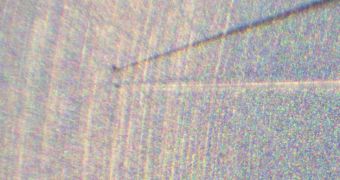Last June, the Hayabusa sample-return mission finally made its way back to Earth, after years of wandering damaged through space. The fine dust grains recovered from its sample container cannot be processed and analyzed however, due to the damage caused in the necessary installations by a tremor.
On March 11, 2011, a magnitude 9.0 earthquake struck off the northeastern coasts of Japan. It was swiftly followed by a devastating tsunami, which further damaged structures, and caused significant loss of human lives.
Also affected by the seismic events was the Tsukuba Space Center, located some 50 kilometers from Tokyo. The epicenter of the massive earthquake was located some 373 kilometers (231 miles) from the Japanese capital.
The TSC was in charge of most current Japanese space operations, such as for example the management of activities on the Kibo science module attached to the International Space Station (ISS), as well as the control of the H-II Transfer Vehicle (HTV-2), also docked to the orbital facility.
The Japan Aerospace Exploration Agency (JAXA), which operates the TSC, says that the facility is also in charge of astronaut training. Satoshi Furukawa is currently preparing to fly to the ISS in May, as part of Expedition 28, and his training is taking place at the NASA Johnson Space Center, in Houston.
But the tremor also damaged the large particle accelerator scientists were using to analyze the dust samples returned by Hayabusa. Authorities say that they have already began repairing the KEK particle-physics laboratory, and that the accelerator will be brought back online soon enough.
As soon as the tremor struck, at 2:46 pm Tokyo time (0546 GMT), all KEK operations were automatically ceased by the failsafe mechanisms installed on the accelerator, and all other ongoing experiments online at the time.
“We have confirmed the radiation safety, and no hazard to the environment has been reported. Also there are no reports of casualties on both Tsukuba and Tokai campuses,” a KEK press release states, quoted by Universe Today.
But, though the particles retrieved from asteroid 25143 Itokawa are safe, repairs at KEK might not get a high priority on Japanese authorities' to-do list. The March 11 tremor and tsunami left a large part of the country in ruins, and reconstruction efforts need to begin as soon as possible.

 14 DAY TRIAL //
14 DAY TRIAL //